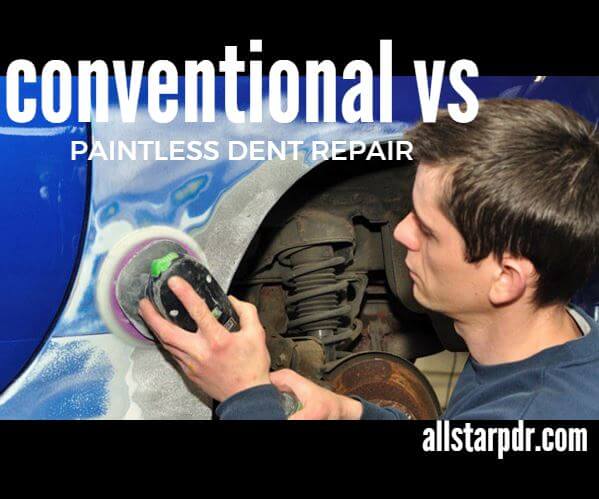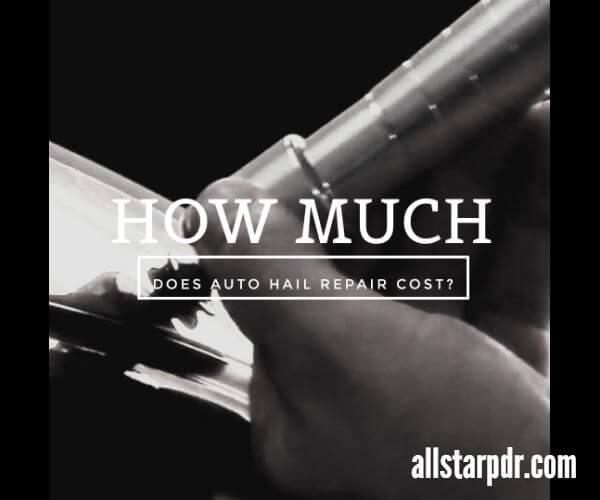
Everything you need to know about Conventional Repair vs Paintless Dent Repair
The paintless dent repair industry has only existed for about the last 25 years. As the PDR industry has grown and progressed, those with auto hail damage now have two options for repair, conventional and PDR.
Conventional repair is the method used by body shops which breaks down into two categories…replace or repair.
When replacing body panels, a new (aftermarket if your car is more than 2 years old, yeah it sucks, check your policy and you’ll see it’s in there) panel is installed in place of the old damaged panel and is then prepped for paint, painted in several coats, sanded, clear coat is applied, then more sanding.
When repairing panels, things start to get ugly. The damaged panel is stripped down to the metal, bondo or another filler is applied, the area is sanded down (rarely flat or smooth), the area is then cleaned and prepped for paint, paint is applied in several coats, sanded, clear coated, and then sanded again.
Sounds routine but there are some major issues with conventional repair versus paintless dent repair.
First, your car is being painted, which can substantially decrease the value of your vehicle. As we shared in our blog post titled “What is PDR?”, the first thing a dealer will look for when appraising your car for trade value is whether or not your car has any paint or body work on it. If so, you can be certain of a lower appraised value.
Next, painting a panel isn’t quite as simple as painting a room in your house. The paint has to match and many cars use a two or three stage paint which is quite a bit more involved than the explanation outlined above. Also, you have to “blend” any panels that get painted with the adjoining panels. So if we paint the hood on a car, we have to “blend” the fender to ensure the paint will match.
Next problem with painting is mistakes get made quite frequently. When your car is painted at the manufacturer, it is painted in a clean room by a computerized robot which controls the amount of paint dispensed and applies it evenly across the entire car. When a human paints a car in a body shop, the shop is rarely clean (leading to what we call fish eyes or dirty spots in the paint) and it takes years of experience to apply paint evenly. Over spray is a common problem as are paint drips which result from too much paint being applied which leaves visible drip marks on the panel.
It gets worse. Due to the extreme heat of Texas summers, any bondo that was applied has a tendency to crack when exposed to extreme heat. In turn, the paint above the bondo will crack and leave your car looking ugly.

So to recap, having your car repaired using conventional repair methods instead of paintless dent repair could result in:
- Mismatched paint
- Single stage applied when double or triple is needed
- Panels not blended to match
- Paint/bondo cracking
- Runs, drips, dirt, and fisheyes in the paint
- Substantial loss in vehicle value
- Extensive repair times (covered further in Body Shop Lead Times)
- Not easy to fix mistakes, have to start over, higher costs
All Star PDR promises our customers we will go to extraordinary lengths to save the factory paint on your car and avoid any trips to the body shop unless absolutely necessary. One of the most important aspects of what we do is help our customers restore the value to their vehicles so not only are they once again proud of their car, but they also come out ahead financially and in the best possible position moving forward.




